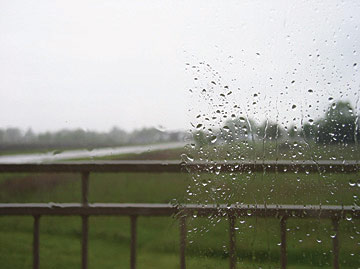New Glass Technologies Improve Performance of Architectural Glass
If the window remains intact within the frame, it can be certified as an impact-resistant window. For impact-resistant glass, all standards including the Miami-Dade County Standard, among the strictest in the country, allow that the glass may be broken, but not penetrated. In this instance, even if the glass cracks, shards remain in the frame, assuring that the building envelope remains sealed.
The testing results in two designations: impact resistance and a design pressure rating expressed in pounds per square foot. Commercially produced products that pass one or more of these standards should have a certificate or label that identifies which standard or standards it has passed. These are usually listed by the test standard number, such as ASTM E 1886 or others.
Since tougher building codes took effect in Florida following the devastation of hurricane Andrew, numerous other states have followed suit by adopting storm-ready building codes of their own, requiring that coastal properties adhere to stricter standards. In an emerging trend, impact-resistant windows are also being used in homes far from coastal areas. Because they also offer increased protection from intruders and against sunlight and unwanted exterior noise, architects and builders are using these tougher hurricane-rated windows in a variety of climates and situations.
Exterior Easy-Cleaning Technology
On normal windows, regularly required maintenance and cleaning can often be expensive and time-consuming and involve harsh detergents. Thanks to new technologies using a microscopically thin coatings of titanium dioxide, TiO2, and the natural powers of sunlight and rain, window manufacturers have refined a reliable, environmentally friendly way to assure the windows stay clean longer.
During the manufacturing process for easy-cleaning window glass, a very thin nanosized coating of titanium dioxide, the white pigment used in products from paints to toothpaste, is integrated into the molten glass. This special coating and the chemical reactions that result have self-cleaning properties that happen at the nano-scale (one thousand millionth of a meter).
|
To begin with, the layer of TiO2 acts as a photocatalyst: Particles of titanium dioxide react chemically with the sun's UV rays and cause organic materials that are on the glass to decompose.
This takes place even on cloudy days, as 80 percent of UV radiation still gets through cloud cover. This chemical breakdown loosens all organic soiling, including dirt, resins and bird droppings that may have built up over time, and facilitates their removal.
Further, the TiO2 coating decreases the surface tension of water that hits the glass surface, causing a hydrophilic (water-attracting) effect. Water does not streak or bead up on the surface, but rather sheets off the glass, carrying loosened particles of dust and dirt with it, and drying without spotting or streaking. Rain water and a light spray by a garden hose will achieve the same effect. The process is continuous, as once activated only a small amount of UV light will trigger the chemical reaction.
In contrast, rain water beads up on plain glass, making the windows appear even dirtier than they actually are. The difference in water repellence properties lies in the surface of each type of glass. Water hits plain glass at a contact angle of 35 degrees, creating a water repellant reaction. But water hits the surface of easy-cleaning glass at a much decreased contact angle, causing it not to bead up, but to spread out flat. Eventually the contact angle of the easy-cleaning glass is so reduced that a super-water-repellant situation is created in which the water virtually sheets or slides off the surface.
Easy-cleaning glass is available for all glass applications, vertical or angled, including windows, doors, roofs and skylights. It is particularly beneficial for hard-to-reach areas such as conservatory roofs. Because the coating is bonded to the easy-cleaning glass, it cannot be worn away or scuffed off. Most manufacturers offer easy-cleaning glass with the option of low-E coatings as well.
New technologies in several areas have made significant impact in energy savings, reliability and ease of maintenance. The field continues to evolve rapidly with manufacturers planning an increasing array of options to increase the energy efficiency and sustainability of new and existing buildings.









